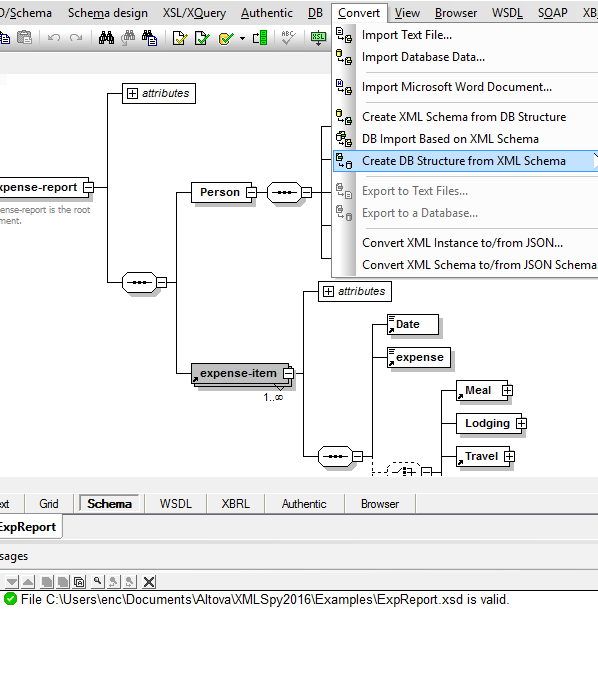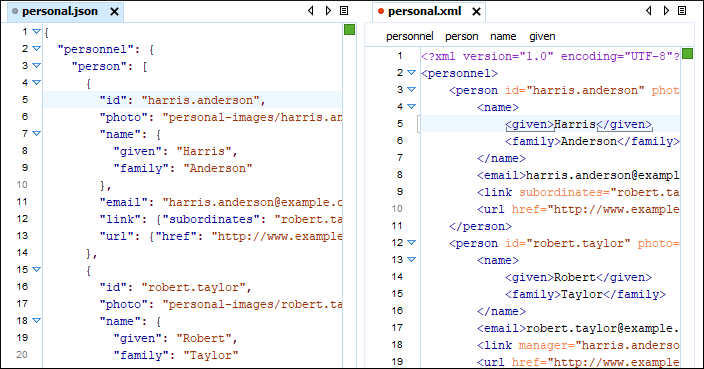- C Convert Linked List To Array
- C Convert Long To Char
- C# Convert Xml To Class
- C Sharp Convert Xml To String
C++ without .NET Framework This tutorial is valid for C++ applications that can use .NET Framework. For applications that does not have .NET Framework integrated, a similar code sample is available. |
Related sectionsHow to convert XML to Excel file?How to import XML Spreadsheet file? |
See alsoHow to import data from XML file or XML string?How to export to XLSX file?How to export to XLSM file?How to export to XLSB file?How to export to XLS file?How to add data to Excel file? |
Related methodsExcelDocument.easy_LoadXMLSpreadsheetFile ExcelWorksheet.easy_insertXMLFromFile ExcelWorksheet.easy_insertXMLFromString ExcelDocument.easy_WriteXLSXFile ExcelDocument.easy_WriteXLSBFile ExcelDocument.easy_WriteXLSFile |
You can XML serialize C++ classes using CMarkup. XML is an excellent format for C++ class serialization because the XML file will be compatible with different builds of your program (whether MBCS, UNICODE, 32-bit or 64-bit), even different platforms.
Jan 02, 2017 The source of the data may be from a 3rd party web service, a file exported from a legacy system, or even a SQL Server table column holding XML information. This article shows a quick and simple way of converting the XML to objects and back to XML again. The sample code which accompanies this article can be downloaded here. I need to convert a xml to csv using script. I found a solution with xmlstarlet but it is not available so i am returning to point 0.
Example of XML serialization in C++

Here is an example C++ class for this tutorial.
Here is the XML format to contain the state of the CXyz class (i.e. 'persist' it) when we perform C++ serialization.
We could have used the tag name Xyz for the container element and no classtype attribute, but sometimes it is nice to be able to quickly spot the class elements that will be handled as subdocuments (see below) by naming them 'Object'.
XML Serialize method
The XML serializer generates a document containing the values of the object's members in the XML format shown above. Here are the steps to creating your Serialize method:
The Serialize method returns an XML document string that represents the current state of the object and can be added as a subdocument into another master CMarkup document (containing other objects, see below) if needed and/or written to file.
XML Deserialize method
The deserializer receives a document in the same format produced by the serializer method and loads the values into the object's member variables. Here are the steps to creating your Deserialize method:


To make a Deserialize method with version flexibility in mind, use the FindElem method as shown here rather than assuming the first element is NotificationCode and the second one is LocationIdentifier. In this example, if an old version of the class did not have a notification code, this function would still work and just set a 0 value for the notification code. The program could be written to understand this value to indicate either a default notification code or an unavailable notification code. See XML Versioning.

Combined XML serialization document
For class serialization and C++ persistence you need to be able to serialize objects that are members of other objects. To combine the serialized C++ objects you treat them as subdocuments. Say you have two CXyz members in a container class called CState:
Here is the XML serialization format which has a root element called State containing two Object subdocuments and a Mode element.
Instead of the State tag name we could have used the Object tag name for the container element here like we did with the subobjects, but since it is used as the root element of the master document it is nice to be more descriptive.

XML serialize multiple objects
Here is some code that XML serializes both member objects into one master XML serialization document. Use the same steps as for the Serialize method above, except for each object member:
Serialize XML document as a subdocumentXML deserialize multiple objects
In deserialization, use the id attribute of the objects to ensure you match the correct data with the correct member. This Deserialize function demonstrates a different algorithm than above. It loops through all of the elements checking tag names. Use the same steps as in the Deserialize method above, but instead of extracting each member, do the following for each element:
This loop style deserialization also has a lot of built in flexibility for evolving changes in the CState class and the corresponding serialization format.
Storing state in a file
Say you have a CState object named m_state. To store the state in a file, you would get the document and write it to file:
To restore the state from a file, you would load the document and deserialize:
Other types, dates and decimal points
CMarkup overloads some methods to accept integer data values, and has the MCD_STRTOINT macro for converting a returned string to an integer. But for other types such as floating point numbers, times and dates, you need to write code to convert the various data types to and from strings.
Avoid any conversions that are affected by system locale.
If you convert a real number to a string with sprintf, it can use a comma for the decimal point in one OS configuration, and a period in another. You should convert it so that it is always one or the other in the string, regardless of locale.
For dates, use a standard such as ISO 8601 e.g. '2005-08-15T15:52:01+0000', and avoid locale dependent formats.
C Convert Linked List To Array
How to XML serialize with less code
C Convert Long To Char
The FindSetData and FindGetData methods which provide 1-stop set/get methods for the dynamic structure functionality of CMarkup are only in CMarkup Developer and the free XML editor FOAL C++ scripting. |
The FindSetData and FindGetData methods, together with absolute paths, provide quick get/set functionality in a CMarkup object. See Dynamic Structure Documents. One step to set the Mode value in the XML document (and create the Mode and State elements if they don't exist).
C# Convert Xml To Class
And one step to get the Mode data value.
Having gone through all the code to get and set C++ class data members, sometimes it is advantageous to avoid this altogether. You can use CMarkup objects to carry all the serializable data of a class or structure rather than using individual data members at all. This eliminates the translation between data members and XML, but still requires you to extract and set the values in the CMarkup object in your program. Serialization is then just a matter of calling the Save or GetDoc method.
I often find it better dealing with a CMarkup object than a struct or class data members, especially when the data set involves arrays and lists, or portions of data that are only occassionally used. XML is very adaptable to hanging additonal pieces of information anywhere in the structure where it makes sense like on one element in an array.